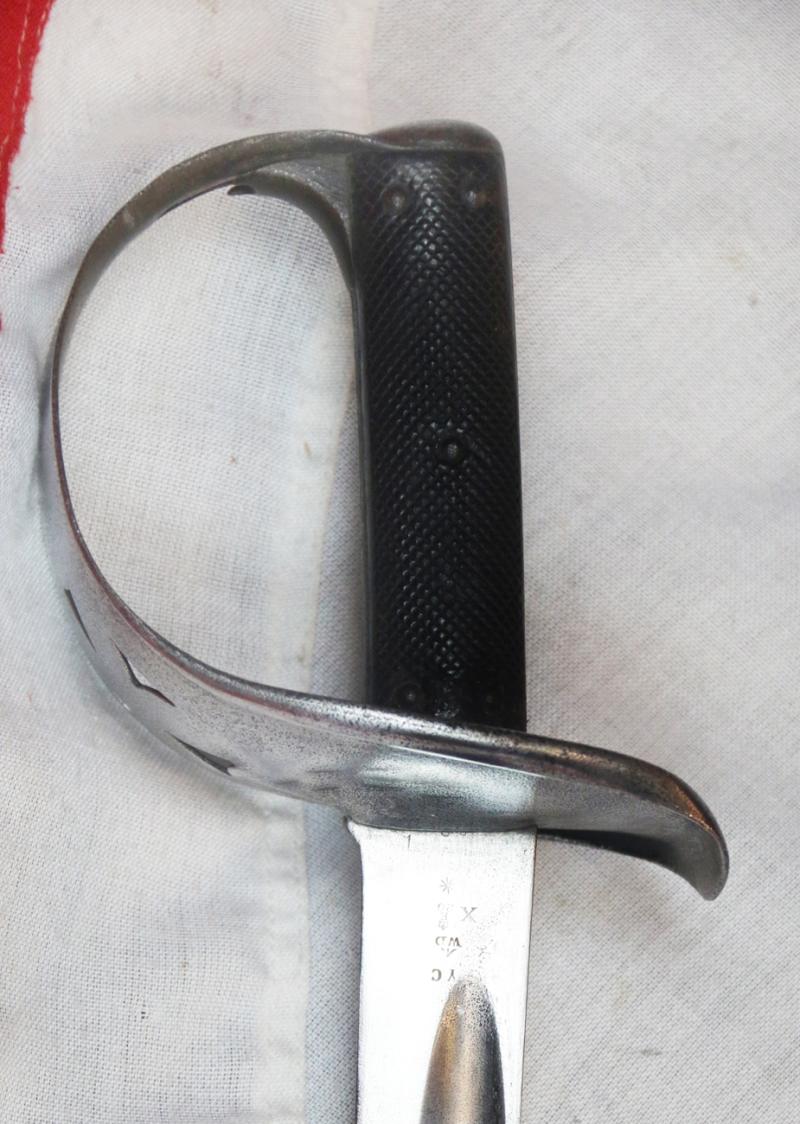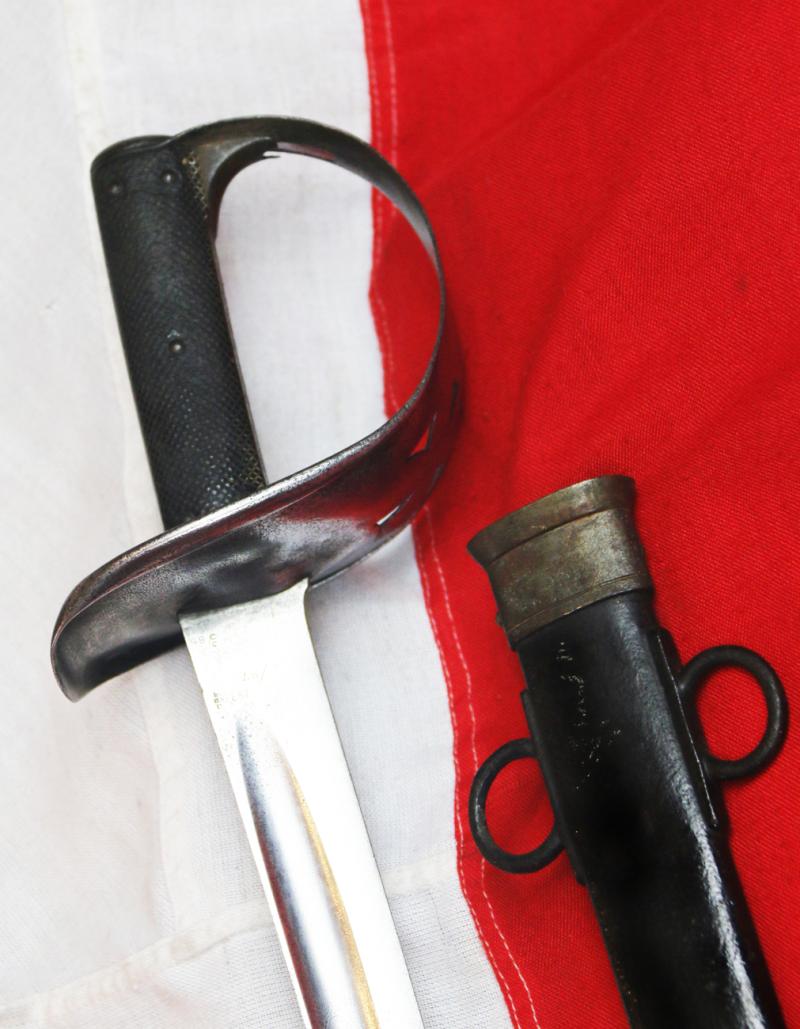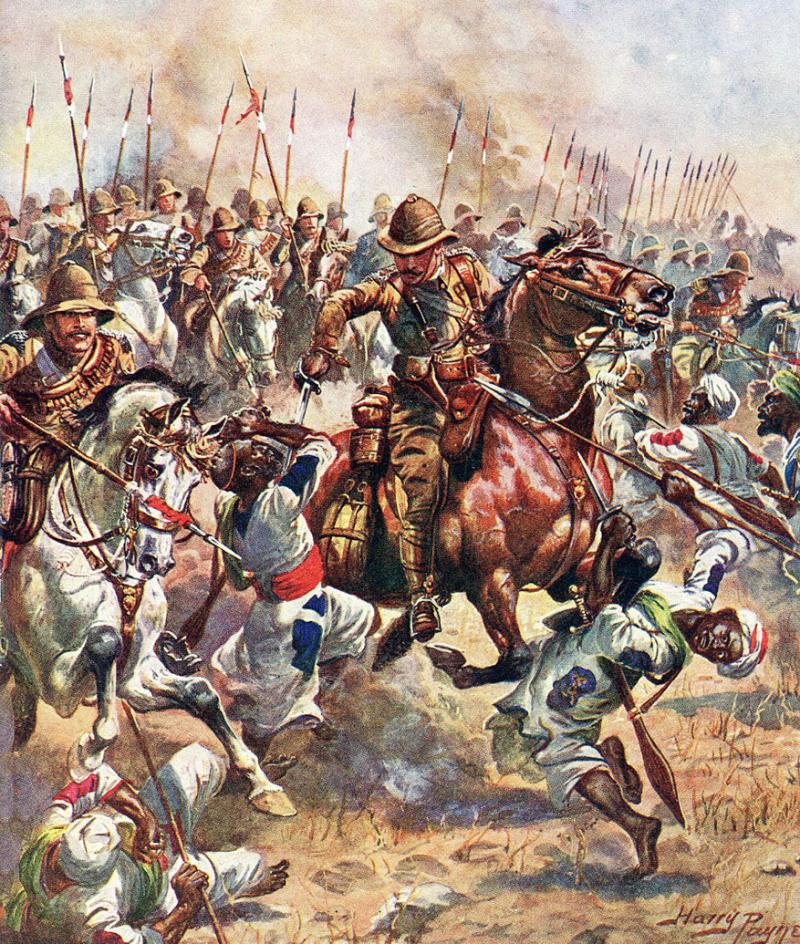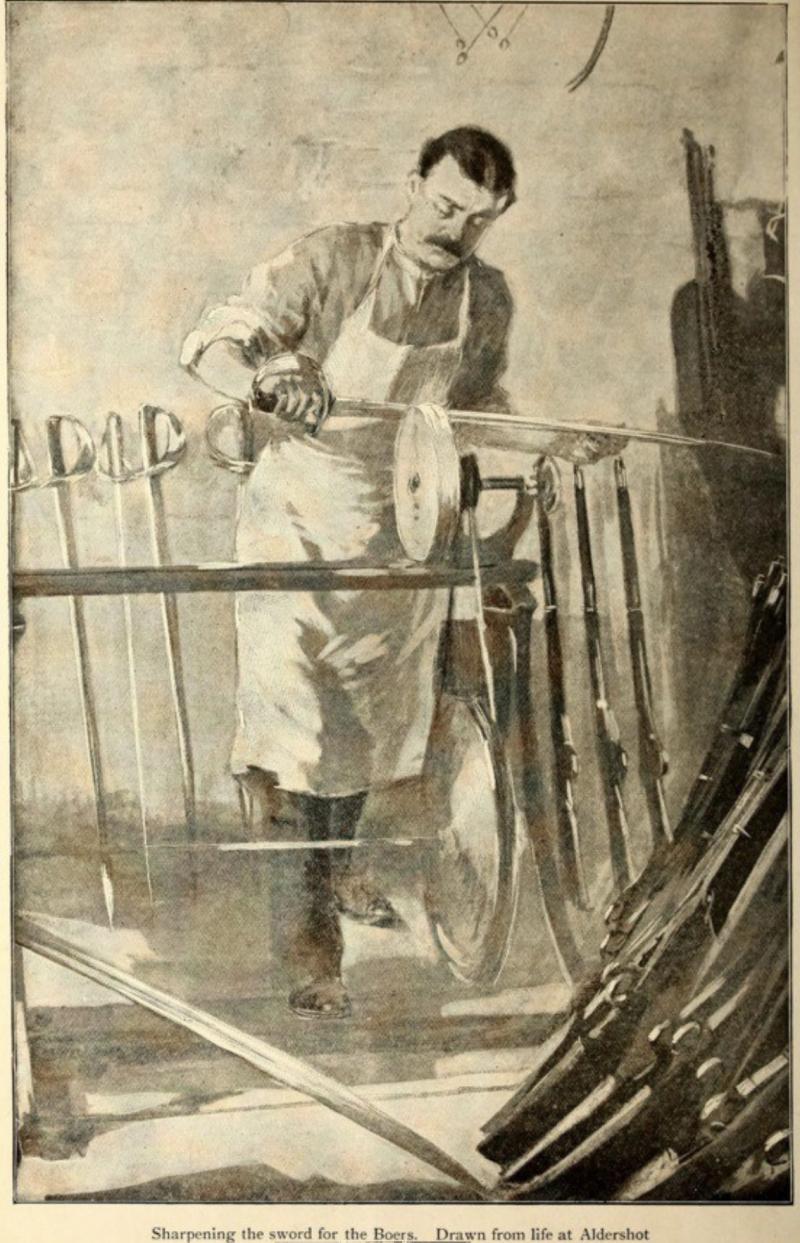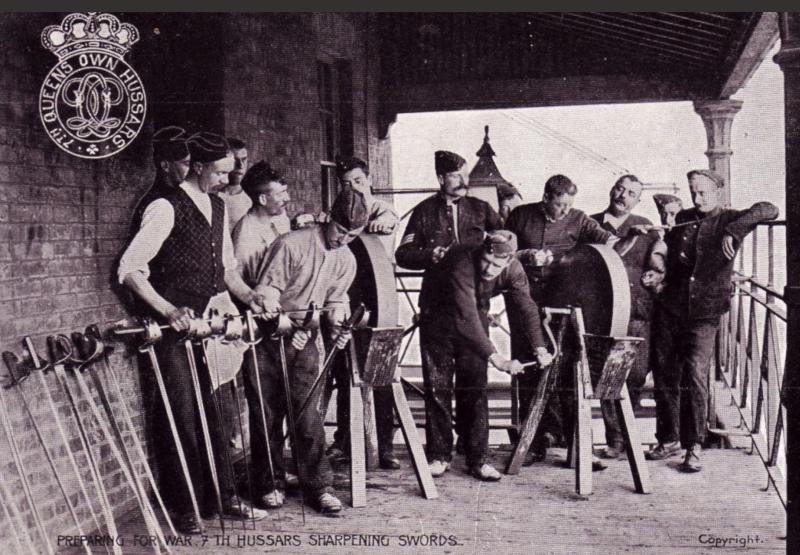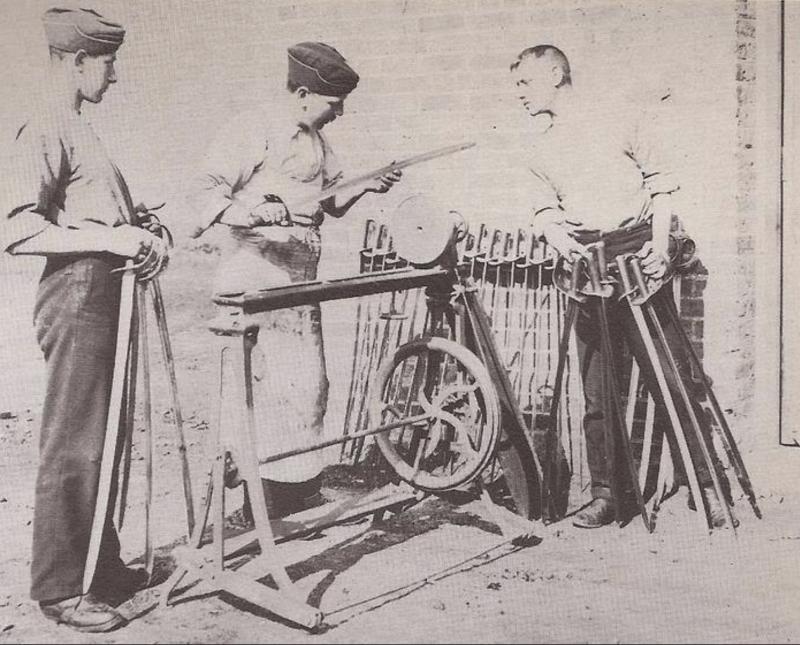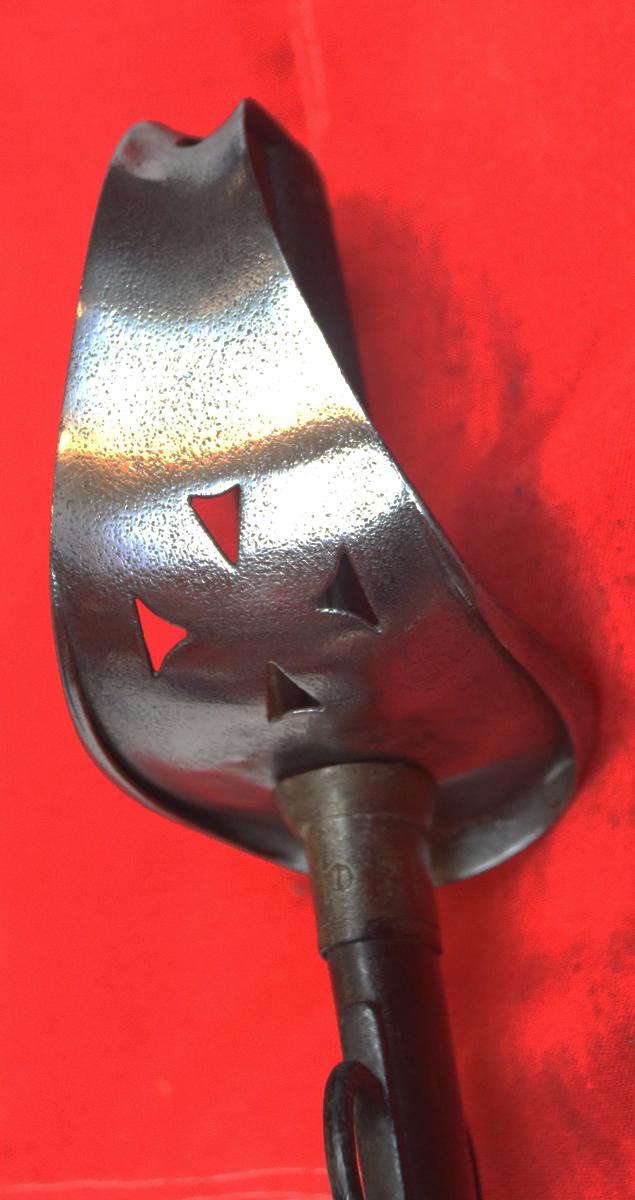A British 1885 Pattern Cavalry Troopers Sabre The Sword Used At the Battle of Omdurman.
1885 Pattern Cavalry Sword After a false start in 1882, the 1885 pattern was developed following committee input on improving the sword. The first opposite ringed scabbard came out of this process along with a slightly shorter blade. This sword saw extensive use in the campaigns in Egypt and the Sudan during the 1880s and 1890s. The shortening of the blade did allow some opponents along the Nile to lie on the ground, putting themselves out of the reach of the trooper's sword! This problem was rectified in the 1899 pattern. Still this sword represented an important step in the evolution of British Cavalry swords and was used by the 21st Lancers at the Battle of Omdurman in 1898; amongst the daring lancers was a young Winston Churchill.
The Battle of Omdurman was fought during the Anglo-Egyptian conquest of Sudan between a British–Egyptian expeditionary force commanded by British Commander-in-Chief (sirdar) major general Horatio Herbert Kitchener and a Sudanese army of the Mahdist State, led by Abdallahi ibn Muhammad, the successor to the self-proclaimed Mahdi, Muhammad Ahmad. The battle took place on 2 September 1898, at Kerreri, 11 kilometres (6.8 mi) north of Omdurman.
Following the establishment of the Mahdist State in Sudan, and the subsequent threat to the regional status quo and to British-occupied Egypt, the British government decided to send an expeditionary force with the task of overthrowing the Khalifa. The commander of the force, Sir Herbert Kitchener, was also seeking revenge for the death of General Gordon, who had been killed when a Mahdist army captured Khartoum thirteen years earlier.3 On the morning of 2 September, some 35,000–50,000 Sudanese tribesmen under Abdullah attacked the British lines in a disastrous series of charges; later that morning the 21st Lancers charged and defeated another force that appeared on the British right flank. Among those present was 23-year-old soldier and reporter Winston Churchill as well as a young Captain Douglas Haig.4
The victory of the British–Egyptian force was a demonstration of the superiority of a highly disciplined army equipped with modern rifles, machine guns, and artillery over a force twice its size armed with older weapons, and marked the success of British efforts to reconquer Sudan. Following the Battle of Umm Diwaykarat a year later, the remaining Mahdist forces were defeated and Anglo-Egyptian Sudan was established.
Pictures in the gallery of photographs of the regimental armourers sharpening their 1885 cavalry swords before combat.
Code: 25013
525.00 GBP



